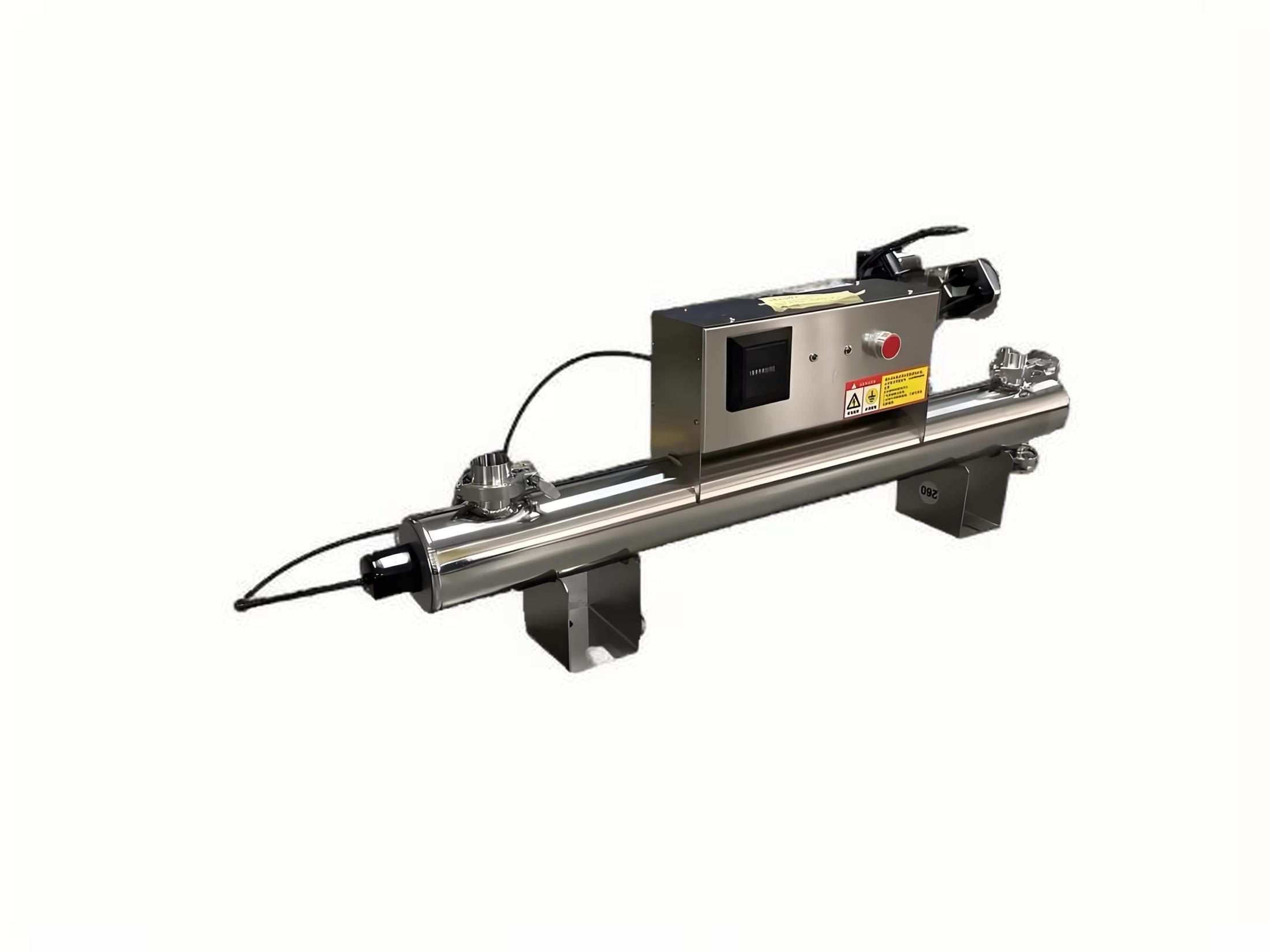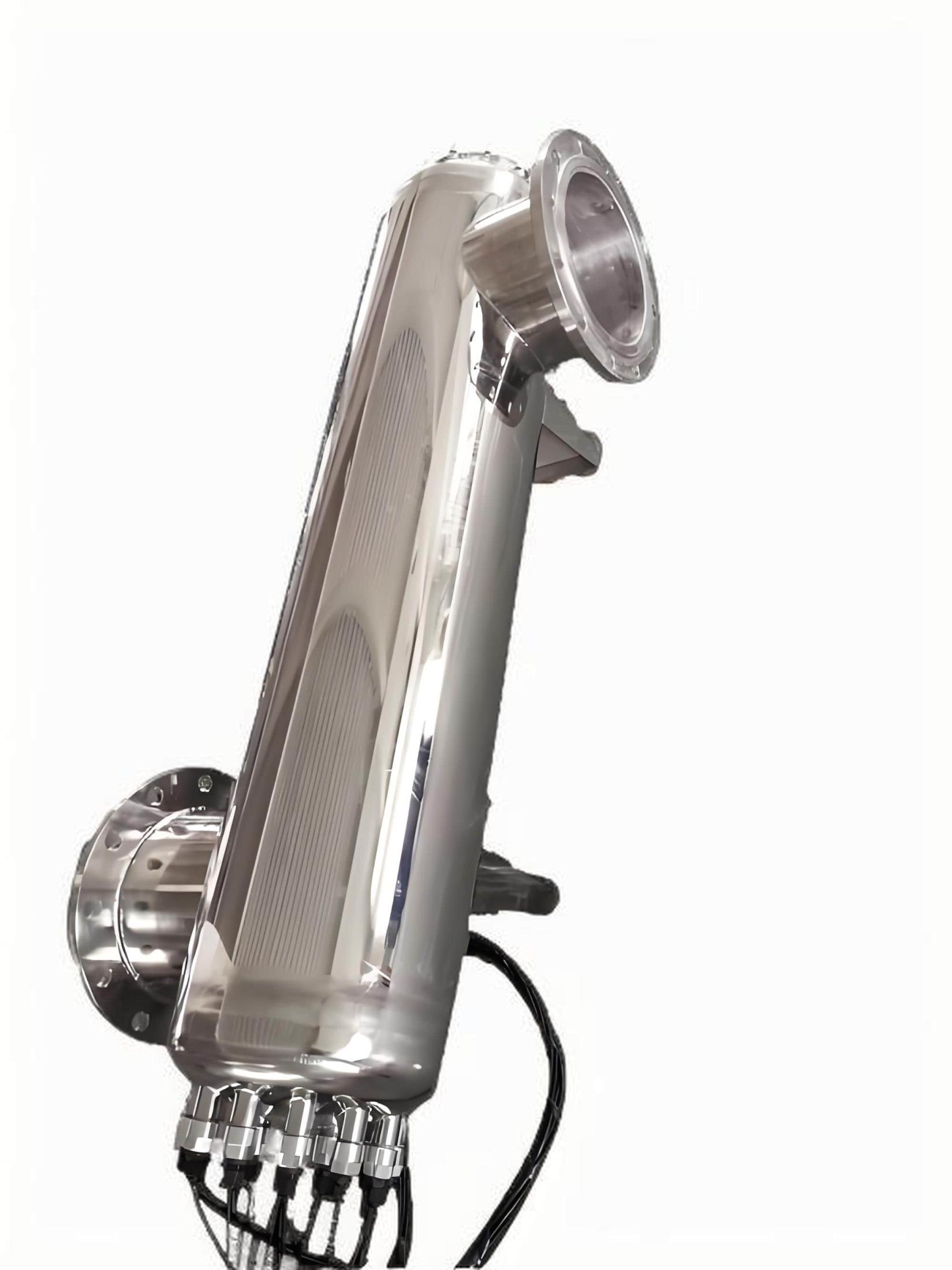Ultraviolet disinfection is considered a highly effective water treatment and disinfection method. UV water sterilizers quickly and reliably treat all biological impurities in water. They require no chemicals, saving costs
Ultraviolet disinfection is considered a highly effective water treatment and disinfection method. UV water sterilizers quickly and reliably treat all biological impurities in water. They require no chemicals, saving costs and eliminating the risk of overdose.
After the disinfection process is complete, 99% of bacteria are killed within 10 seconds of UV exposure. UV water treatment is highly regarded because it is easy to install and does not alter the pH, taste, or other components of the water.
With FupengWater's expertise in UV water sterilization, you can achieve cost-effective solutions that create value while reducing the operating costs of your reverse osmosis system.
Bottled Water Plants
Surface and Groundwater Treatment
Dairy Industry
Hospitals
Hydroponics and Farms
Restaurants and Food Industry
Water Softeners
Cooling Towers
Greywater Treatment
FupengWater has over 20 years of experience as a leading global supplier of UV sterilizers for microbial water treatment. Their UV water treatment systems are designed to remove all harmful organisms from the water supply. These systems offer users advantages in cost, efficiency, and maintenance, ultimately delivering a high return on investment.
We strongly recommend using our UV water sterilizers as a post-treatment step in the water treatment process. Almost all microorganisms are susceptible to UV disinfection. For every penny invested in operating costs, hundreds of gallons of water can be purified.
No chemicals are added, and there's no risk of overdosing. Water can be used directly from the purifier without additional treatment. They are easy to use, install, and maintain. The compact units take up minimal space for operation and storage. And there's no chlorine odor or corrosion.
FupengWater UV water sterilizers use germicidal UV lamps, which generate shortwave radiation that kills bacteria, viruses, and other microorganisms in water. UV water purification is a unique and rapid method of water disinfection that doesn't require heat or chemicals. For years, UV technology has been the preferred method for cost-effective water disinfection.
FupengWater UV water purifiers are ideal for a growing number of water treatment applications. We offer UV water treatment systems from well-known brands such as Sterilite and R-Can.
For more information on UV sterilizers, visit the "Resources" section of our blog.
Efficient: Almost all microorganisms are susceptible to FupengWater UV sterilization.
Affordable: Hundreds of gallons of water can be purified for every penny of operating cost.
Safe: No risk of overdose, no added chemicals required.
Fast: Water is ready for use immediately after passing through the purifier, with no additional waiting time.
Convenient: Simple installation and maintenance. The compact unit takes up minimal space.
Automated: Continuous or intermittent disinfection can be performed without special attention or measurement.
Chemical-Free: No chlorine odor or corrosion issues.
Versatile: Treatment capacities range from 2 to 800 gallons per minute (gpm).
All lamps used in FupengWater units are low-pressure, producing the required germicidal radiation with maximum efficiency. In addition to its significant advantages of high efficiency and low power requirements, this device does not overheat (as some other lamp types can). Therefore, no additional heat protection equipment is required.
Kills up to 99.9% of bacteria and viruses.
Maximum pressure: 125 psi
Ambient temperature: 2–400°C
Features a rugged stainless steel or aluminum protective housing.
The reaction chamber is backed by a seven-year warranty for exceptional reliability.
Includes mounting clamps and quartz sleeves.
UV water purifiers are significantly different from water filters. The difference is immediately apparent in appearance: a UV sterilizer is essentially a large bulb enclosed in a metal frame, while a water filtration system uses a filter element made of activated carbon or other composite materials.
UV water purifiers also work differently from filters. While water purifiers reduce or eliminate contaminants by trapping them within a material, UV systems allow water to flow directly through the UV tube without being blocked by a filter.
UV water purifiers eliminate dangerous pathogens, cysts, and other organisms by destroying their DNA. Water filtration systems, on the other hand, don't kill organisms; the filters primarily remove suspended solids from the water by blocking their passage.




Copyright 2025 All Right Reserved. Hebei Fupeng Environmental Protection Technology Group Co., LTD